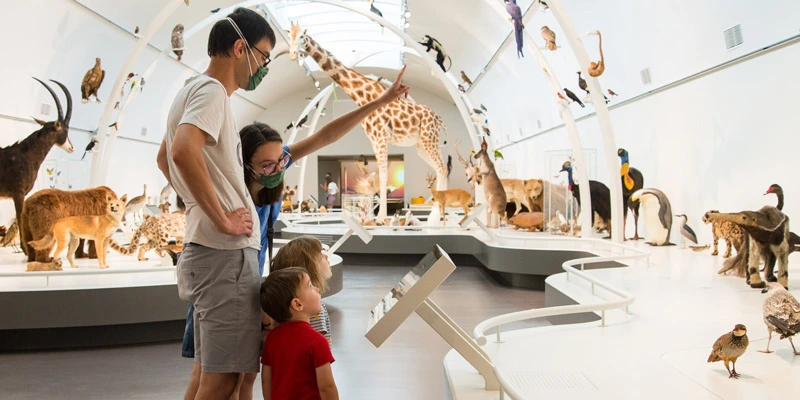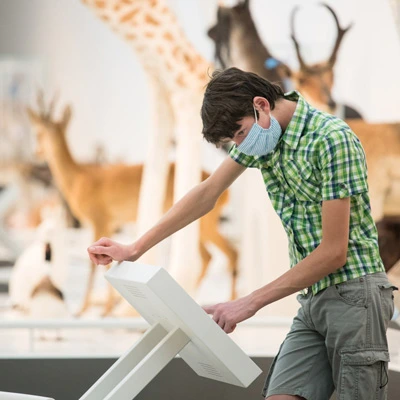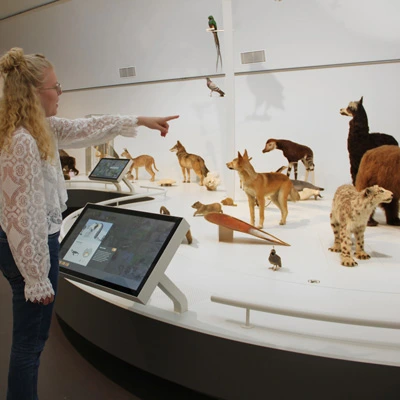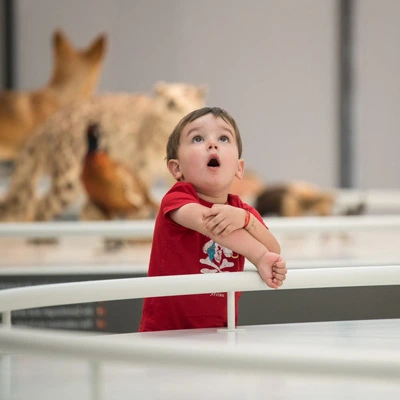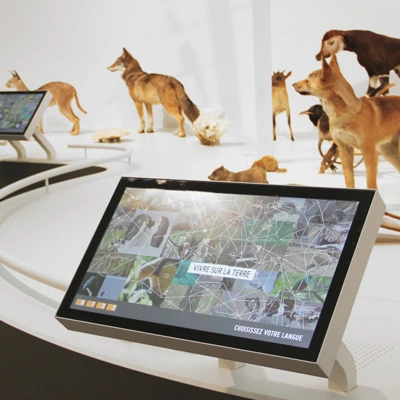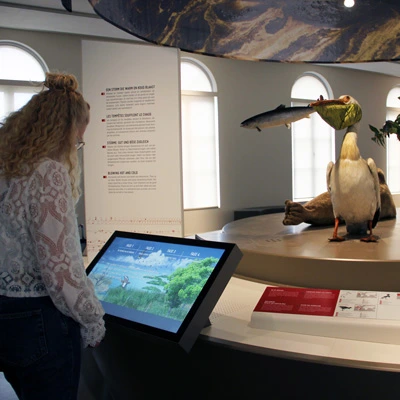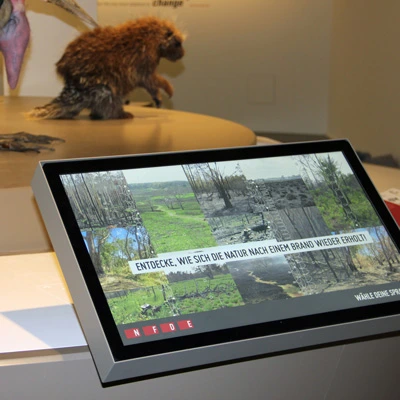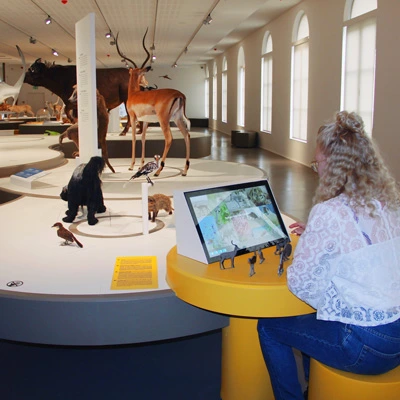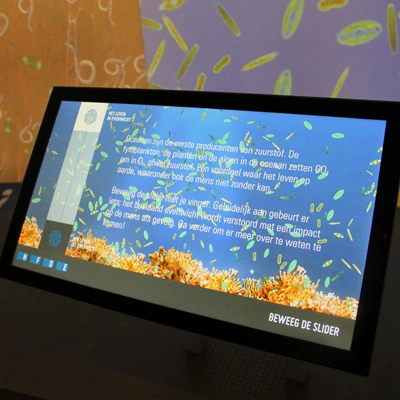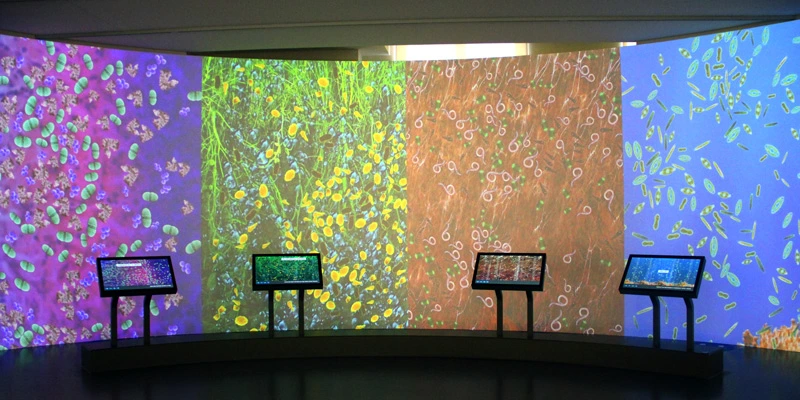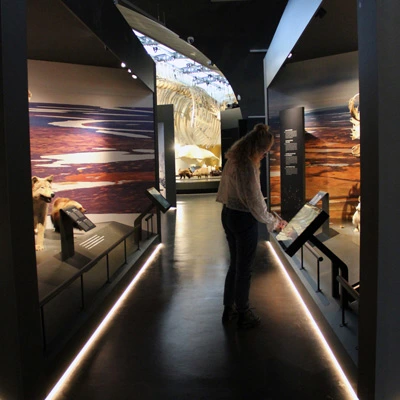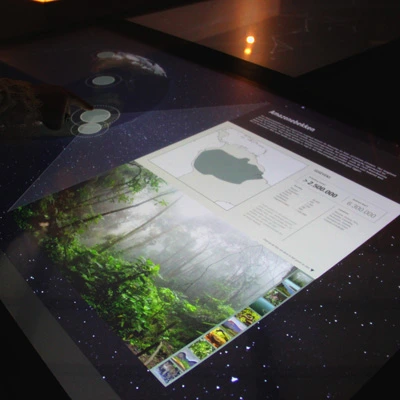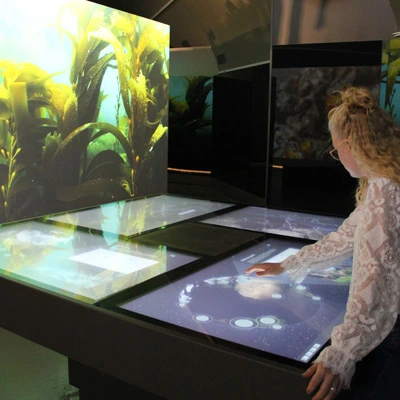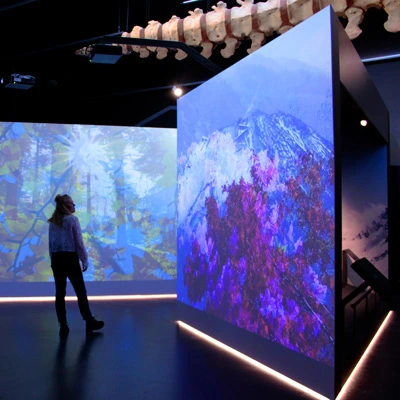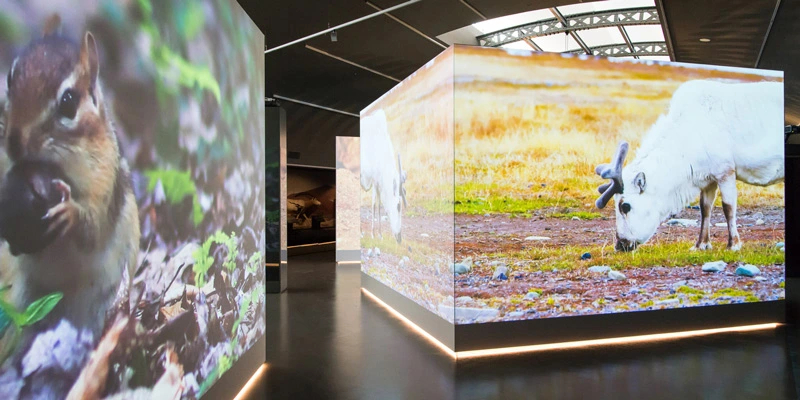Living planet
Understanding biodiversity and ecosystems through playful investigation.
Museum of Natural Sciences, Brussels (BE), 2020
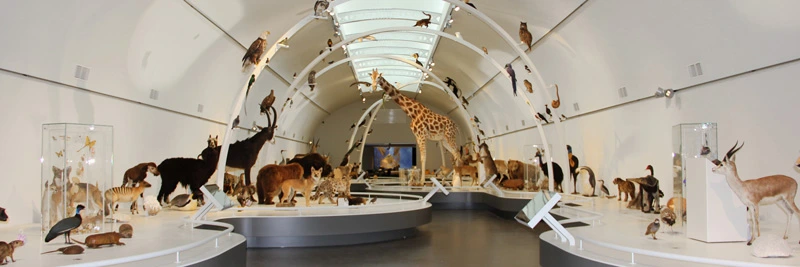
Overview
The Living Planet exhibition takes visitors on an educational journey through the diverse ecosystems that make Earth such a vibrant and interconnected planet. Spanning two floors, the exhibit showcases over 800 animal species, highlighting the delicate relationships between them and their environments. These connections can be explored through interactive screens, projections, and immersive activities where visitors can gain a deeper understanding while having fun.
Contribution
I was responsible for the visual, multimedia, and Audiovisual design of the exhibition, with a focus on making complex scientific concepts accessible and enjoyable for everyone. Rather than simply presenting information, my focus was on creating an experience that encouraged visitors to explore and learn through an immersive and learn-by-doing approach.
Key achievements
- Connected hundreds of specimens to interactive content
- Ensured narrative cohesion across two exhibition floors
- Turned natural science into a playful learning experience
- Worked with EU teams in a renowned national institution
Explore the next project or drop me a message.
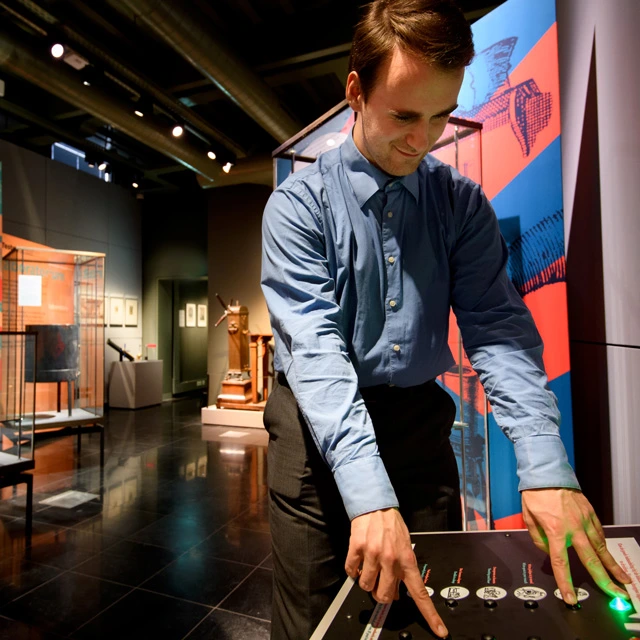
Herman Boerhaave
Rijksmuseum Boerhaave, Leiden (NL)
